CBHS Principal Named 2014 Lawrence O’Toole Award Recipient

This article provides information on the 2014 Larry O’Toole Award winner. Casco Bay High School Principal Derek Pierce was awarded the Nellie Mae Education Foundation’s 3rd Annual Larry O’Toole Award. The award and monetary prize is given annually to a New England school, district, or organization dedicated to student-centered learning. Casco Bay High School is… Read More ›
Sanford Vision: Learning For Life
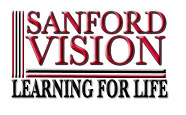
Sanford Public Schools district website includes a detailed “vision” for every Sanford student which aligns with the Students at the Center framework. Source Organization: Sanford School Department VISIT THE RESOURCE
Sanford Vision: Learning For Life – Logic Model
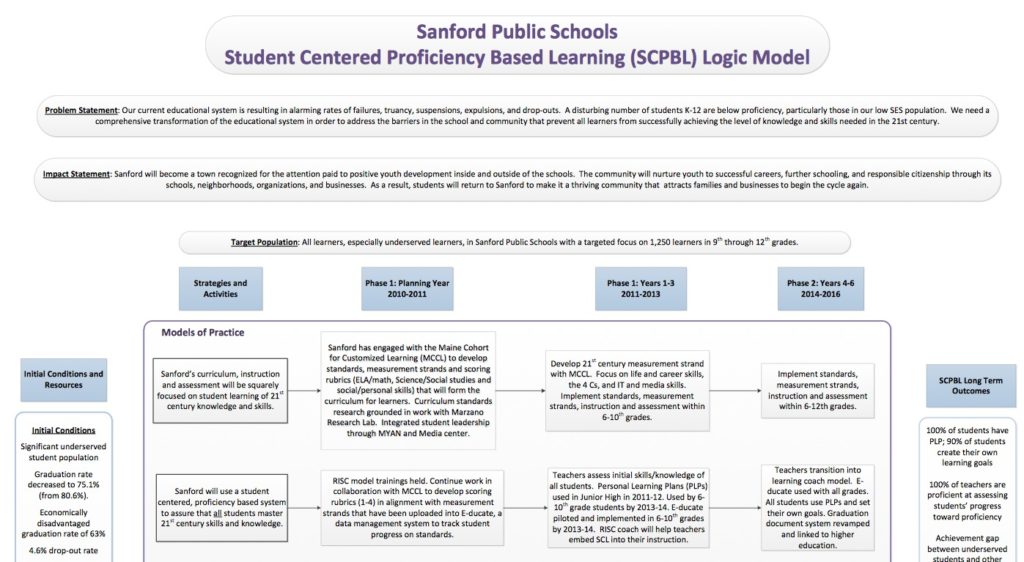
Sanford Public Schools district website includes a logic model which aligns with the Students at the Center framework. Source Organization: Sanford School Department VISIT THE RESOURCE
“I Used to Think”
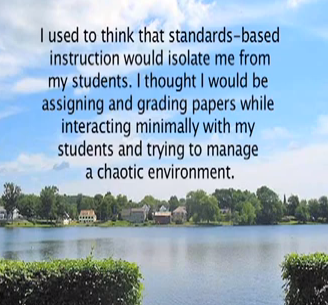
This video from the Sanford Public School features Sanford teachers discussing their process of continuously learning to adjust their classroom practices in order to provide student-centered, proficiency-based learning experiences for and with their students. Source Organization: Sanford School Department
Curriculum & Instruction – Sanford Public School
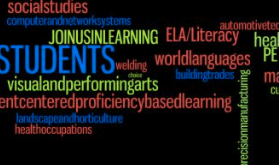
The Sanford Public School provides public details about their curriculum and instructional approach with resources for parents, students, and staff. Source Organization: Sanford School Department Visit the Resource
Student-Centered Schools Study: Closing the Opportunity Gap

The Student-Centered Schools Study, funded by the Nellie Mae Foundation, looks closely at four California high schools that use either the Linked Learning or Envision Schools model to achieve positive outcomes for all their students. These schools all serve predominately low-income students and students of color. These signature models of student-centered learning can inform efforts… Read More ›
Leadership in Action: What Are Personal Learning Plans?
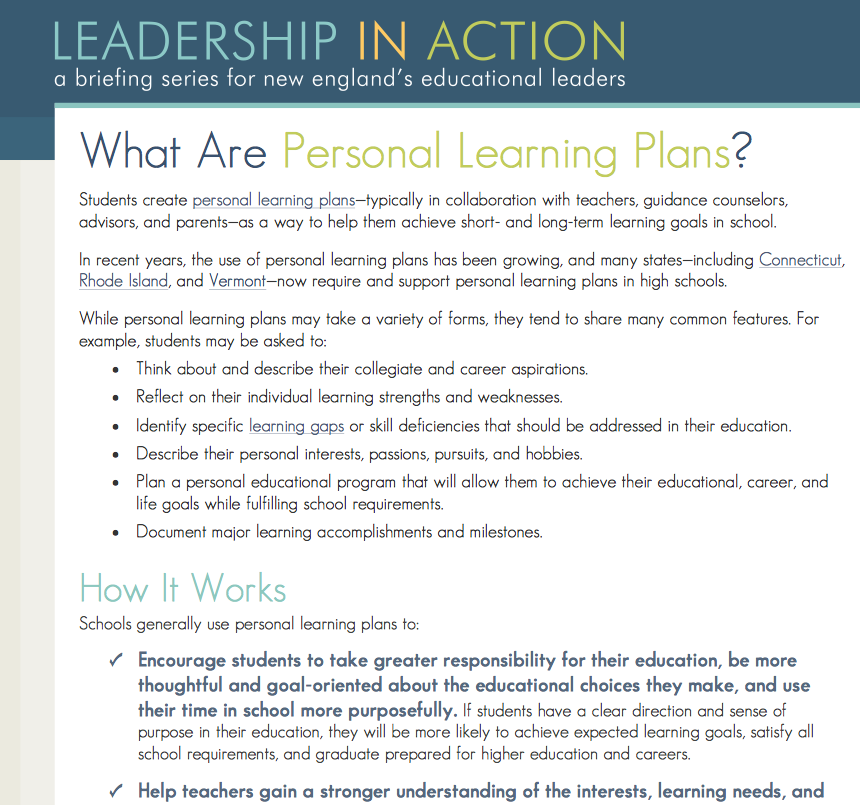
This issue brief from the New England Secondary School Consortium’s Leadership in Action series outlines what personal learning plans look like, and how schools are using them to help students achieve short and long term learning goals. Source Organization: New England Secondary School Consortium (NESSC) Visit the Resource
Ready for College and Career
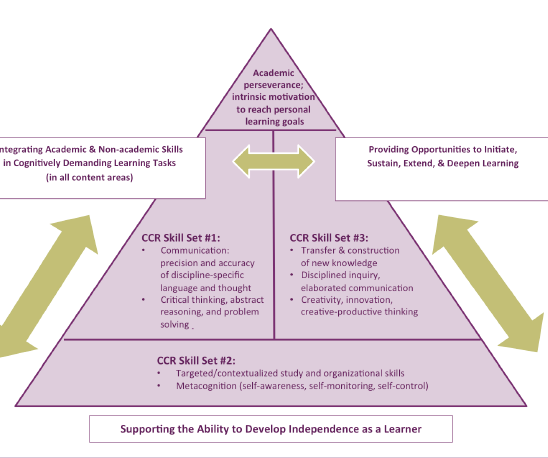
The report finds that a range of cross-cutting skills like communication, innovation and self-regulation are crucial to student success. Student-centered approaches to learning can equip students with a range of skills necessary to succeed on the Common Core State Standards exams, in college, and in their careers. Source Organization: The Nellie Mae Education Foundation VISIT… Read More ›
Personal Opportunity Plans

Personal Opportunity Plans (POPs) – an ongoing process designed to maximize a student’s academic and personal development – create a set of systems and structures for supporting students at every step along their path toward a satisfying and successful future. This paper aims to support the adoption of POPs in conjunction with districts’ and schools’… Read More ›
Weaving Skills Ropes: Using Metaphor to Enhance Understanding of Skills and Learning

This report from the FrameWorks Institute’s Core Story of Education project presents “Weaving Skill Ropes” as an explanatory metaphor to help explain the concepts of skills and learning–specifically, what skills students need to succeed in a 21st century economy, how these skills are learned, and how cognitive and emotional learning skills are related. Source Organization:… Read More ›
More Efficient High Schools in Maine: Emerging Student-Centered Learning Communities

More Efficient High Schools in Maine: Emerging Student-Centered Learning Communities explores whether schools can be high performing, efficient, and student-centered at the same time. Seven of Maine’s high schools were selected for the study, of which five were classified as “more efficient” by exhibiting higher student academic performance and a higher return on spending. Findings… Read More ›
Getting Down to Dollars and Cents: What Do School Districts Spend to Deliver Student-Centered Learning?

This report provides a critical foundation for the delivery of student-centered learning by exploring three questions: How is student-centered learning delivered? What resources are needed to implement student-centered learning? How does district spending on student-centered learning compare with spending on traditional schools? Findings show that the implementation of student-centered approaches can be tailored and affordable… Read More ›